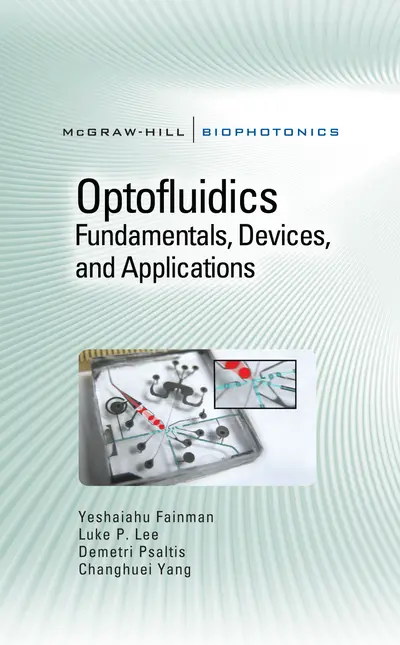My Account Details

ISBN10: 0071601562 | ISBN13: 9780071601566

Step 1 . Download Adobe Digital Editions to your PC or Mac desktop/laptop.
Step 2. Register and authorize your Adobe ID (optional). To access your eBook on multiple devices, first create an Adobe ID at account.adobe.com. Then, open Adobe Digital Editions, go to the Help menu, and select "Authorize Computer" to link your Adobe ID.
Step 3. Open Your eBook. Use Adobe Digital Editions to open the file. If the eBook doesn’t open, contact customer service for assistance.
Publisher's Note: Products purchased from Third Party sellers are not guaranteed by the publisher for quality, authenticity, or access to any online entitlements included with the product.
Cutting-Edge Optofluidics Theories, Techniques, and Practices
Add novel functionalities to your optical design projects by incorporating state-of-the-art microfluidic technologies and tools. Co-written by industry experts, Optofluidics: Fundamentals, Devices, and Applications covers the latest functional integration of optical devices and microfluidics, as well as automation techniques.
This authoritative guide explains how to fabricate optical lab-on-a-chip devices, synthesize photonic crystals, develop solid and liquid core waveguides, use fluidic self-assembly methods, and accomplish direct microfabrication in solutions. The book includes details on developing biological sensors and arrays, handling maskless lithography, designing high-Q cavities, and working with nanoscale plasmonics. Research outcomes from the DARPA-funded Center for Optofluidics Integration are also discussed.
Discover how to:
- Work with optofluidic sources, lenses, filters, switches, and splitters
- Use dielectric waveguiding devices to input, move, and manipulate fluids
- Integrate colloidal crystals and fibers with microfluidic systems
- Develop bio-inspired fluidic lens systems and aspherical lenses
- Deploy miniaturized dye lasers, microscopes, biosensors, and resonators
- Analyze microfluidic systems using flow injection and fluorescent spectroscopy
- Build optofluidic direct fabrication platforms for innovative microstructures
- Accomplish optofluidic liquid actuation and particle manipulation
1.1Existing technologies with fluidic and optical components
1.2Advantages of fluids for optical systems
Ch 2. Optics and Microfluidics fundamentals
2.1Introduction to optics
2.2Introduction to Microfluidics
2.3Soft Lithography Technology
2.4Composite Membrane Technology
2.5Integration Technology
Ch 3. Optofluidic Devices and Systems Classification
3.1Fluid in solid
3.2Solid in Fluid
3.3Fluid in Fluid
Ch 4. Optofluidic Devices
4.1Electrowetting Lenses
4.2Adaptive Optics
4.3Optofluidic Switches
4.4Optofluidic Lasers
4.5Tunable optofluidic filters
4.6Optofluidic Actuators and Micromechanical Systems
Ch 5. Optofluidic Integrated Systems
5.1 Optofluidic Microscope
5.2 Optofluidic Plasmonic Sys
5.3 Optofluidic Spectrometers
Ch 6. Discussions and Future Prognosis of the Field
Need support? We're here to help - Get real-world support and resources every step of the way.
